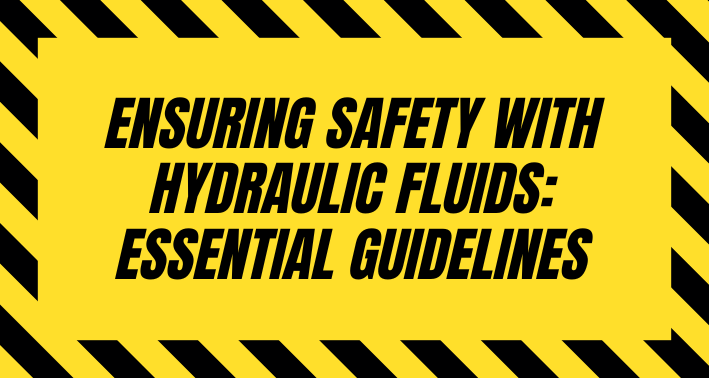Hydraulic fluids are crucial for the smooth operation of various machinery and equipment. However, handling these fluids safely is equally important to prevent accidents and ensure a safe working environment. This blog post covers essential safety guidelines for handling hydraulic fluids.
Understanding Hydraulic Fluid Safety:
1. Composition and Hazards: Hydraulic fluids typically consist of base oils and additives. While these components are designed to enhance performance, they can pose health and safety risks if not handled properly. Common hazards include:
- Skin and Eye Irritation: Direct contact with hydraulic fluid can cause irritation or burns.
- Inhalation Risks: Breathing in vapors or mist can lead to respiratory issues.
- Fire Hazards: Hydraulic fluids are flammable under certain conditions.
For detailed hazard information, refer to our Hydraulic Fluid Safety Data Sheet (SDS).
2. Personal Protective Equipment (PPE): When handling hydraulic fluids, wearing appropriate PPE is crucial. This includes:
- Gloves: Protect your hands from direct contact with the fluid.
- Safety Glasses or Goggles: Shield your eyes from splashes or sprays.
- Respirators: Use if there is a risk of inhaling vapors or mist, especially in confined spaces.
- Protective Clothing: Prevents skin contact and contamination of regular clothing.
3. Safe Handling Practices:
- Storage: Store hydraulic fluids in tightly sealed containers in a cool, dry place away from direct sunlight and heat sources. Ensure proper labeling and secure storage to prevent leaks or spills.
- Spill Management: Have spill containment kits readily available. In case of a spill, contain and clean it up immediately using absorbent materials. Dispose of waste according to local regulations.
- Avoid Ingestion: Never siphon hydraulic fluid by mouth. If ingested, seek medical attention immediately.
- Ventilation: Ensure proper ventilation in areas where hydraulic fluids are used to minimize inhalation risks.
4. First Aid Measures:
- Skin Contact: Wash the affected area with soap and water. Remove contaminated clothing and seek medical attention if irritation persists.
- Eye Contact: Rinse the eyes with plenty of water for at least 15 minutes. Seek medical attention if irritation continues.
- Inhalation: Move to fresh air immediately. If breathing difficulties occur, seek medical attention.
- Ingestion: Do not induce vomiting. Seek medical attention immediately.
5. Fire Safety:
- Extinguishing Media: Use dry chemical, foam, or carbon dioxide (CO2) extinguishers for hydraulic fluid fires.
- Firefighting Procedures: Wear appropriate protective gear, including a self-contained breathing apparatus (SCBA). Avoid using water as it may spread the fire.
6. Environmental Precautions:
- Prevent hydraulic fluids from entering waterways or drains. In case of environmental contamination, follow local regulations for cleanup and disposal.
- Dispose of used hydraulic fluids and contaminated materials responsibly. Use designated waste disposal services to ensure compliance with environmental regulations.
Explore Our Range of Hydraulic Fluids
For high-quality hydraulic fluids that meet safety standards, visit our Hydraulic Fluids Page. Our products are designed to provide excellent performance while prioritizing safety and environmental responsibility. Each product page includes a link to the respective safety data sheet for detailed information.

















